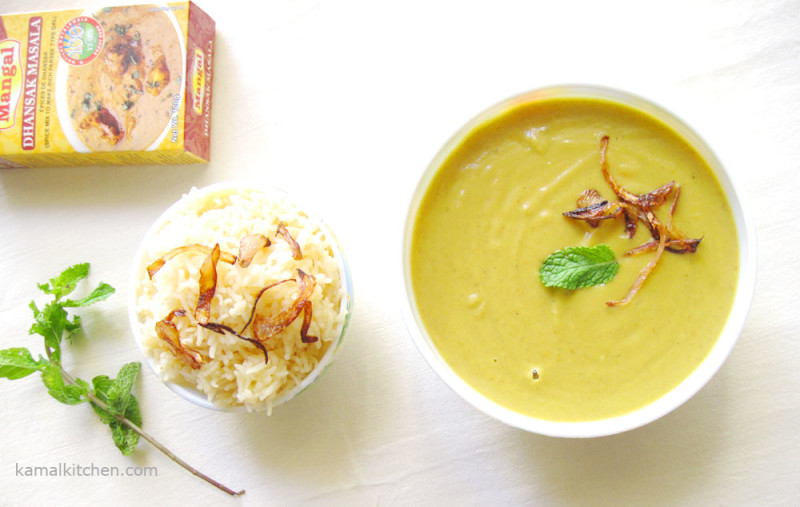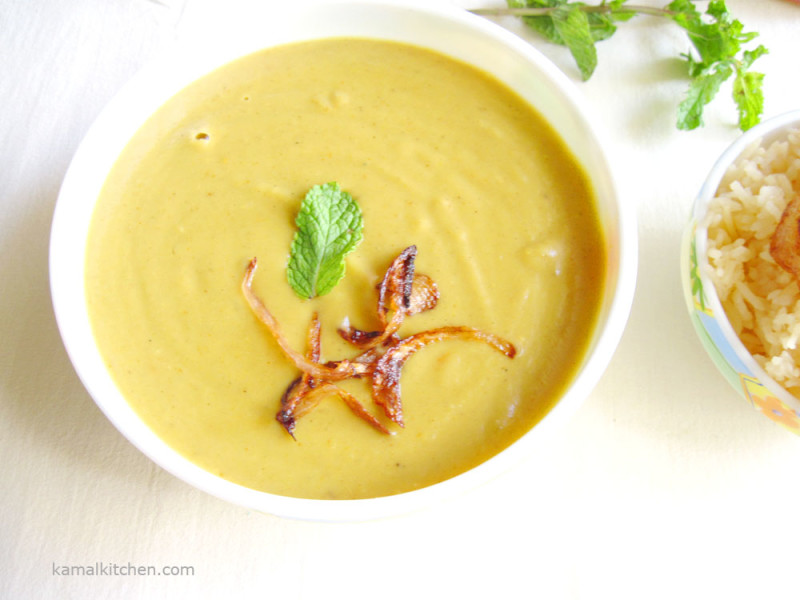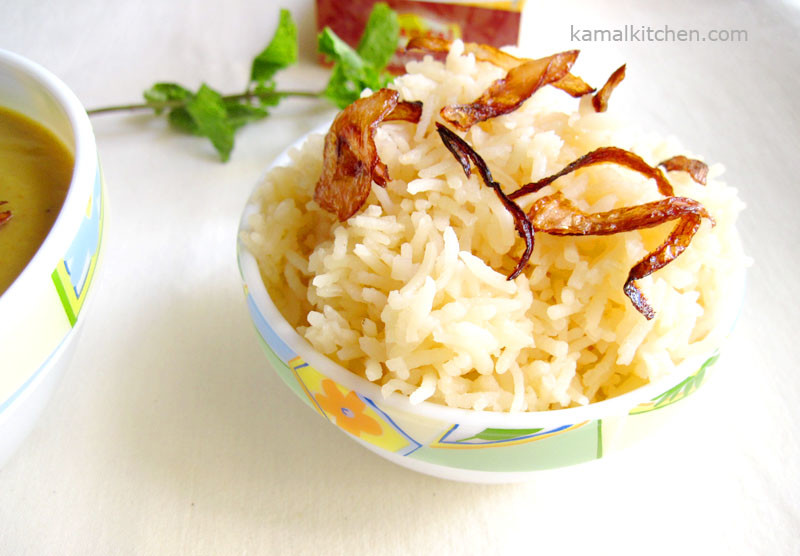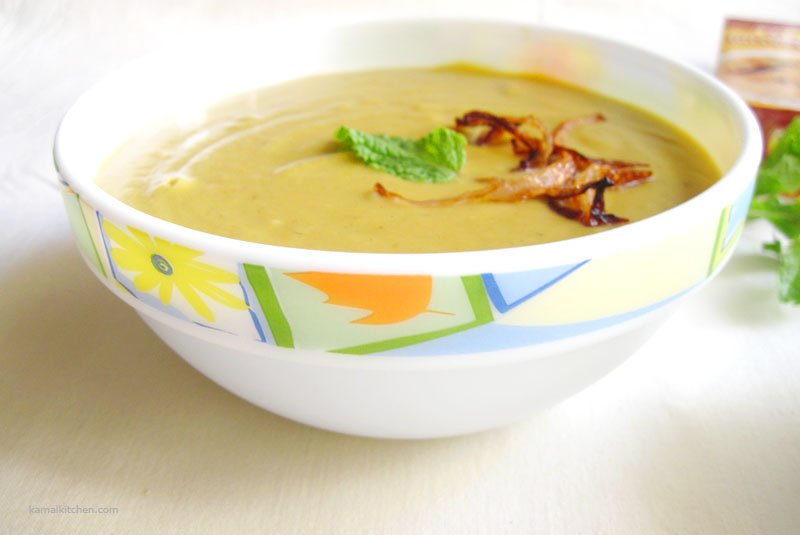Lentil and vegetable stew is such a generic term. Sambar is also a lentil and vegetable stew but it comes from South India. Even though a loose translation of many Indian dishes gives us the lentil stew moniker, each regional recipe has its own peculiarities, traditions and cultural significance.

The Dhansak is a lentil stew which has firm place in Parsi cuisine. Centuries ago, in the middle ages, some Persians migrated to India and settled down in the Gujrath and Sind regions. They retained some of their own traditions and also picked up local flavor. Today, Parsis are a thriving community in India.
Dhansak has meat added to it in the form of mutton or chicken. But this is of course a vegetarian recipe. Carnivores will be glad to know that this stew is used as a base to which meat is added, so the recipe more or less remains the same. Vikas Khanna’s Dhansak episode is one of my favorites from his Twist of Taste – Coastal Curries. Although I was tempted to make a Dhansak spice mix from scratch, I will be using a packaged version today.
Dhansak was one of my go-to one pot meals when I lived in the US, and I think it is worth mentioning that it was easier procuring Dhansak Masala in small town USA than it was in Pune. I actually had to go to 3-4 stores to land my hands on one. And, no it is not feasible to head to Dorabjee’s store all the time.

Luckily enough, the Dhansak Masala I got is from the Mangal brand. I love their Parsi Khambati Sambar Mix so I assumed that the Dhansak Mix would also be good. And I was glad to be proven right.
Although this Dhansak is a lentil and vegetable stew, you can’t use just any vegetable if you want the authentic taste. Potatoes, eggplant and pumpkin went in and so did a small tomato. Some modern recipes mentioned green pepper but I went without it because it adds a very distinct flavor that tends to overpower everything else.
The stew uses three types of daal – toor, red masoor daal and yellow moong daal in certain proportions. The daals cook up to a lot so you don’t really need a lot of them.

Well, if you are new here, you won’t know that I am doing a #30daysofdaal project. This involves blogging about a daal recipe everyday in the month of June. I have many simple recipes in this series, but some recipes, like this Dhansak are slightly more elaborate. But they are not really hard to follow once you have tried them out a couple of times.
Dhansak is typically served with Parsi brown rice which uses white rice grains. The brown color refers to the caramel water which the rice is cooked in. The caramel adds a slight brown color hence the name. You can add whole spices like cloves, cinnamon, pepper, bay etc. to flavor the rice. But I am going with a simple version today.
Dhansak is a Sunday dish, and also eaten during the mourning period.

I used a stick blender to get a smooth base because that is how the stew is supposed to be. But I wouldn’t really mind a rustic version.
Another thing I did differently from the traditional recipe was using mushroom stock. I think it adds a meaty flavor and more depth. You can use packaged mushroom broth if you have some handy. I used a more crude method. I just added the mushrooms to the oil first and let them give off water. Then I scooped out the mushroom bits and was left with some strongly flavored oil that I cooked the masala in.
Many Indian vegetarians are iffy on the mushrooms so this is an optional step.
Parsi Dhansak and Brown Rice Recipe
Ingredients
- ½ cup toor daal
- ¼ cup yellow moong daal
- ¼ cup red masoor daal
- 1 cup potato cubed
- 1 cup pumpkin cubed
- ½ cup eggplant cubed
- 1 Tbsp ginger root
- 5-6 cloves garlic
- ½ small onion
- 2 onions chopped
- 2 tomatoes chopped
- 1 Tbsp jaggery or brown sugar
- 2 tsp dhansak masala
- 1 tsp cayenne pepper or paprika
- 1-2 cups mushroom stock or water
- 4-5 mint leaves
- 4 Tbsp oil
- 2 Tbsp sugar
- 1 cup basmati rice
- 2 cups water
- Pinch of salt
- 1 Tbsp caramelized onion for garnish
Method
- Soak all the daals for 3-4 hours. This will ensure that they are really smooth when cooked.
- Combine daals and chopped vegetables in a pressure cooker. Add double the water and cook for 3 whistles plus steam for 15-20 minutes. You want everything to be cooked really well.
- Grind the ginger, garlic and onion into a paste and set aside.
- Chop two onions finely, and chop the tomato.
- Heat oil in a thick stock pot.
- Add the finely chopped onions and fry until they are light brown but not burnt.
- Now add the ginger garlic paste, stir once or twice and add tomatoes. Add mint.
- Add the dhansak masala, paprika and mix well.
- Now add the cooked daal/ vegetable mixture.
- Add water or mushroom stock as needed to get the desired thickness. The stew will thicken more later.
- Bring to a boil and simmer for 10-15 minutes.
- Taste and adjust seasonings. Add the sugar and salt and more dhansak mix if needed.
- Blend using an immersion blender or pass through a colander to get a smooth texture.
- Sprinkle the sugar over a thick bottom stock pot.
- Let the sugar melt and turn brown.
- Gradually add some water to get caramel water.
- Now add the rice to this and cook as usual.
- Garnish with caramelized onion if desired.
- Serve the Dhansak hot with brown rice.
Parsi Dhansak is spicy and comforting and also very sumptuous. Eat a bowl or two and you will be one happy camper. This recipe will make enough Dhansak for 4 adults when served with brown rice. We had leftovers too.
I hope you try out this Dhansak recipe and let me know how you liked it. Stay tuned for more regional daal favorites in #30daysofdaal.

Pragati, I regularly read your blog. I really enjoy the “mahaul” you make for each of your recipes! The 30 days of daal is quite fascinating. The Maharastrian daals made me very nostalgic. Currently I am trying out different types of pulao, replacing the rice with quinoa. I am unsure if quinoa had become that popular in India yet. It does taste quite good. By the way, Will you be blogging 30 or 15 or however many days of rice sometime?!
Hey M…what a pleasant surprise..I am so glad to see your comment…love quinoa, but it is available in very limited places and is very expensive..i guess maybe 500 rupees for 200-250g..so not very affordable.
I am glad you are liking the daal series…yes, a series on rice sounds nice..and very doable 🙂 Let us see how this one goes!